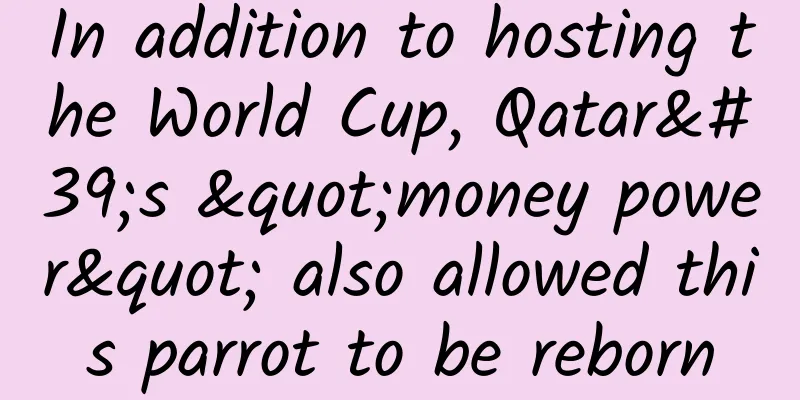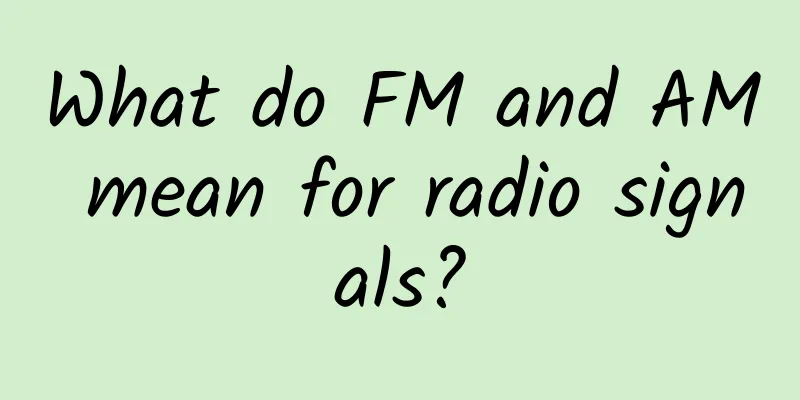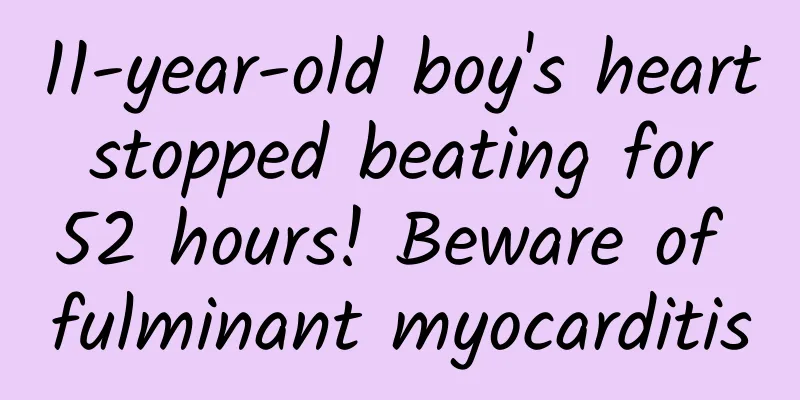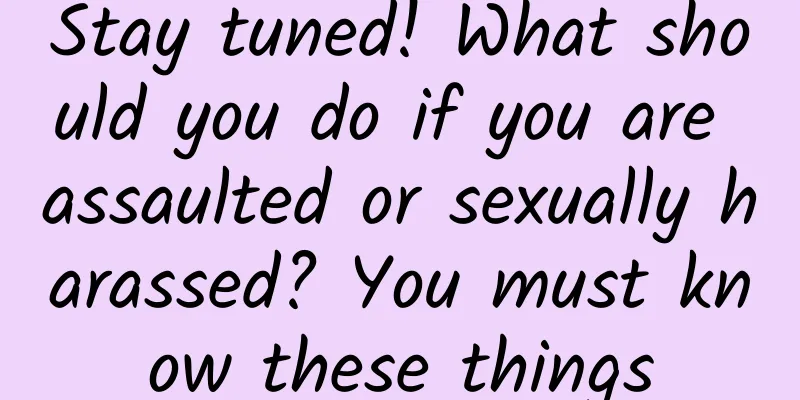In addition to hosting the World Cup, Qatar's "money power" also allowed this parrot to be reborn

|
Just the day before yesterday, the Qatar World Cup, which football fans have been looking forward to, finally opened! There are many special features of this World Cup. In addition to the change of the holding time from the traditional summer to winter, it also ended the tradition of using animal mascots for three consecutive World Cups - the mascot of the 2018 Russia World Cup was a Siberian wolf, the 2014 Brazil one was a three-banded armadillo, and the 2010 South Africa one was a leopard; and this year's Qatar World Cup, the mascot was inspired by the traditional Arab costume "Laib", nicknamed dumpling skin by fans . Why didn't Qatar use an animal as its mascot this year? Qatar is a small peninsula in the Persian Gulf. Deserts cover most of the land. Extreme heat and lack of precipitation make it difficult for most animals to survive here. However, an animal that has been declared extinct in the wild has "reborn" in this harsh peninsula : the blue macaw (Cyanopsitta spixii). Stuffed Blue Macaw|Daderot / Wikimedia Commons The much-loved parrots are disappearing from their homes In the last century, collecting rare antiques from all over the world was one of the fashionable pastimes of Qatar's princes and nobles. They used the dollars they earned from oil and natural gas to purchase paintings, jewelry, antiques and even dinosaur fossils from all over the world at a staggeringly large cost. In addition to artworks, rare and beautiful animals are also part of their collections. In the farms built in the middle of the desert, Qatari nobles raise many rare animals, including various birds of paradise from New Guinea, East African antelopes, and desert cats from the Middle East... The most famous and endangered species among them is the blue macaw. The blue-grey macaw comes from the sparse woodlands in the arid northeastern region of Brazil. The vegetation here thrives during the short rainy season, but in the dry season, all plants appear gray and withered. The golden oak (Tabebuia aurea) growing along the banks of the water source is an important food source for the blue-grey macaw, and the tree holes in the old dead trees are also their nests. The only home of the Little Blue Macaw is the unique Caatinga Biome, which is a combination of deciduous shrubs and seasonally dry woodlands under local semi-arid conditions.|NiaziGamer / Wikimedia Commons Perhaps because their natural distribution area is very limited, or perhaps because of the long-term damage to the local environment caused by human activities, when the blue macaws were discovered by European scholars 200 years ago, they were already very rare . Soon, this rare and beautiful parrot became a hot collection for collectors. As the number of parrots dropped sharply, some people were more willing to spend a lot of money to buy a small blue macaw, which could even sell for $2,000 . Even though the Brazilian government banned the export of wild animals in the 1960s, it was unable to stop the illegal trade from driving the small blue macaw to extinction. In 1987, investigators found only three blue macaws - two of which disappeared into the pockets of pet dealers soon after. The last male blue macaw could not find any other blue macaws and had to live with a female blue-winged macaw (Primolius maracana). After October 2000, no one saw this blue macaw in the wild again. At the turn of the century, the blue macaw completely disappeared from its wild home, leaving only a few individuals scattered around the world. Blue-winged macaws. Remember them, they will appear again later. | TJ Lin / Wikimedia Commons From collecting curiosities to supporting breeding But the blue macaws have not yet become completely extinct, and their last hope comes from individuals in private zoos . In order to allow the little blue macaw to return to the wild, the Brazilian government and several conservation organizations began trying to gather the existing parrots and establish artificial breeding populations in the 1980s and 1990s. The Brazilian government also exempted private collectors from participating in the plan, hoping that more holders would allow their parrots to join the breeding plan. However, the constant dispute over ownership and the high transfer price made the artificial breeding plan go down the drain . There are also blue macaws in "Rio", but in reality, it is not easy to bring them back to life | "Rio" Just as the blue macaw was on the verge of extinction in the wild, Qatar's Al Wabra Wildlife Preservation Prince ( AWWP ), originally a private zoo for princes and nobles, decided to get involved in conservation work. Although many sellers were reluctant to sell their parrots easily, they used their money to buy the remaining precious individuals from collectors around the world. Soon, AWWP became the institution with the largest number of small blue macaws in the world . AWWP also hired professionals to start an artificial breeding project. In order to solve the problem of inbreeding, they tried to breed parrots through artificial insemination. In 2013, the first artificially inseminated blue macaw was born . AWWP bred 1-day-old, 25-day-old, 7-8-week-old Blue Macaw chicks and Blue Macaw chicks|AWWP This practice of AWWP is an important innovation for wildlife farms in the entire Arabian region. In the early days, many of the collected animals were not in good condition. With the participation of professional veterinarians and conservationists, the artificial breeding of small blue macaws has gradually been put on the right track, and the disease problems that have long plagued the captive population have also been solved . Many macaws that travel from Brazil to Europe and the United States suffer from a disease called "Parrot Forest Dilatation", which is characterized by decreased appetite, vomiting, continuous weight loss, and eventually death. The same is true for the little blue macaws. In 2008, researchers finally discovered that the disease was mainly caused by virus transmission, and AWWP immediately established a parrot isolation program. When individuals infected with the virus were discovered and isolated, the healthy population was finally able to continue. In addition, AWWP has purchased a 2,380-hectare farm within the original habitat of the Blue Macaw in preparation for its release. Dutch animal painter Joseph Smit depicted the blue macaw in 1878 | Joseph Smit After disappearing for 20 years, they returned to their hometown After years of planning, breeding and preparation, 52 little blue macaws were transferred back to the wild adaptation facility in their native Brazil in March 2020. Just this June, the first batch of little blue macaws were successfully released into the wild , returning to their homeland where the species had disappeared for 20 years. In order to ensure the smooth implementation of the release plan, the staff not only put locators on the parrots, but also prepared companions for them - a group of blue-winged macaws with similar habitats and familiar with the local environment. It is hoped that the little blue macaws can quickly adapt to life in the wild under their leadership. In addition to releasing the parrots, restoration work on the local special ecological environment is also underway: the local native vegetation has been consumed by slash-and-burn agriculture and livestock gnawing for many years. Now, conservation ecologists are trying to rebuild an ecosystem including a variety of animals such as the blue macaw on top of these native vegetation. A blue macaw photographed in Germany in the 1980s | Rüdiger Stehn / Wikimedia Commons For many species with a similar fate to the Blue Macaw, their populations in zoos and artificial environments are key gene banks, and are also the crucial, last-ditch insurance for reintroduction projects. Although the first batch of small blue macaws have returned to the wild, there is still a long way to go to establish a self-sustaining wild population . If the mortality rate of the first batch of individuals released into the wild is too high, the wild release plan will be temporarily suspended. Their fate is still in the hands of humans. Endangered Animal Breeding and Research Center in the Desert|AWWP Now, a large part of the blue macaws owned by AWWP have been transferred to conservation institutions in Europe and Brazil. This private farm has also gradually transformed from an animal collection center that satisfies the curiosity of the rich to an institution for artificial breeding of endangered species . This conservation center, located in central Qatar, covers an area of 2.5 square kilometers and is not open to the public. It is home to more than 2,500 animals from over 100 species , including Qatar's only native gazelle, the Arabian sand gazelle, the first animal to be restored from extinction in the wild to a vulnerable species, the Arabian Oryx, as well as the flamingo and royal bird of paradise. Arabian Sand Gazelle|AWWP The official website of AWWP states that they are striving to become "the most advanced breeding and research center for endangered wildlife" - a breeding center in the desert, which will undoubtedly be an important contribution of Qatar to biodiversity conservation . Author: Shi Xu Editor: Mai Mai This article comes from the Species Calendar, welcome to forward If you need to reprint, please contact [email protected] |
<<: Will this internet-famous asteroid really destroy the Earth?
>>: The only difference between "social phobia" and "social bull" is a greeting
Recommend
Will a nap while lying on your stomach cause gastroptosis? The truth is...
Rumor: "Taking a nap lying on your stomach w...
Champollion - a genius who rivaled Thomas Young
French linguist Champollion systematically studie...
A former employee reveals the inside story of Keliyuan's huge losses
The financial report recently released by Hunan K...
B station established an open source working group and multiple apps use its open source projects
The barrage video website bilibili (B station) re...
Why is it bad if the title tag of a web page is too long?
Why is it bad if the title tag of a web page is t...
Hu Xia's personal profile: What are the benefits of company SEO optimization? Is corporate SEO necessary?
Nowadays, many companies and enterprises are cond...
How can we help our children become more courageous when facing failure?
This article is selected from the Hunzhi comic se...
8 Big Data Analysis Models - User Model (I)
A model refers to a formal expression of a practi...
National trend marketing methodology in 2022!
Although the issue of national trends is always m...
The moon is the most familiar and mysterious object. How should ordinary people observe it?
Author | Wang Siliang Review | Zheng Chengzhuo Ed...
Are you also staying up late to retaliate? The night is so beautiful, but it is also dangerous!
recent A girl shared the changes after going to b...
The Everest we climbed together in those years
On May 25, 1960, the Chinese mountaineering team ...
How did those animals with the word "king" in their names become kings?
In nature, some animals are "crowned kings&q...
How to reach 637w Douyin views in 1 month?
On TikTok, how can a single video reach millions ...









